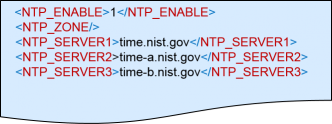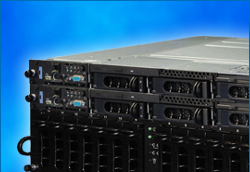


Highly scalable and fully redundant carrier-grade EMS with auto-provisioning and device management.
Auto-Provisioning:
- Hierarchical and regional partitioning
- Device or server-initiated provisioning
- Scheduled provisioning with history logs
- Event, alarm, and fault management
- Detailed call statistics and VoIP metrics: R-factor, MOS, jitter, delay, packet loss
- Remote device access and control via SNMP, Telnet, Web
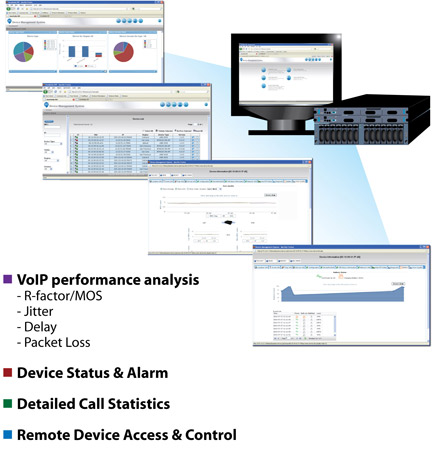
| Element Management System (EMS) – InnoMedia’s EMS is a scalable and fully redundant solution offering device auto-provisioning as well as device Management functions: | |
| Auto-Provisioning – An ideal solution for the automation of device provisioning associated with large scale deployments of telephony CPE devices over broadband IP networks. InnoMedia EMS’s auto-provisioning supports HTTP, Secured HTTP and TFTP provisioning protocols. It generates device-dependent configuration files on the fly, providing maximum flexibility for provisioning devices with per device parameters. | |
| Device Management – InnoMedia’s EMS allows a service provider’s customer support and maintenance personnel to provide effective device management, trouble-shooting, and statistics collection, all from an easy-to-use and secure browser interface. The system is able to manage and communicate with devices even if they are behind a NAT router. |
A key ingredient for any successful service is the ability to effectively manage all elements of the service network at all times. This capability is paramount to being able to offer the best performance and the best quality to customers. To address this need, InnoMedia has developed server solutions that offer operators a powerful way to manage hundreds of thousands of devices on their networks. All of InnoMedia’s server solutions feature redundancy for maximum uptime and reliability, as well as a scalable architecture that can grow as the service provider’s network grows.
Furthermore, the InnoMedia EMS provides a web-based and customizable dashboard interface, allowing the system administrator to have a quick overview of the whole system’s statistical data and to query individual device status and current configuration information.
The InnoMedia EMS provides a SOAP/XML Northbound Interface to the Operator’s OSS for provisioning. In addition, SNMP traps from the ESBC-specific devices can be filtered and forwarded by the EMS to a trap collector in the operator’s core network.
An overview and the feature highlights of the InnoMedia Element Management System are given below.
Overview
The InnoMedia Element Management System (EMS) is a feature-rich, highly scalable, and highly reliable VoIP device network element management system. The EMS is designed to achieve not only Auto-Provisioning of remote devices, but also reliable Device Management. Some of the objectives of the InnoMedia EMS include:
- To work with devices using various provisioning protocols and configuration file formats.
- To support service providers that require hierarchical or regional partitioning of device classes, as well as scheduled provisioning with reliable provisioning history logs.
- To work with devices operating in various customer premise environments where a SOHO router/ NAT may be deployed.
- To have a reliable fail-over mechanism required by commercial VoIP services.
- To be scalable to meet growing business needs.
With these objectives in mind, the InnoMedia EMS offers the following features and capabilities:
Device Auto-Provisioning:
- Provisioning protocols: Supports TFTP, HTTP, and HTTP with security
- Configuration file formats: INI (tag=“value”), XML, Column Separated Value (tag:value), and TLV
- Device initiated or server scheduled provisioning
- Provisioning history records
Device Management:
- As a VoIP device element management system:
- Provides a network view of device distribution
- Allows MIB configuration
- Provides event, alarm, and fault management
- As a vehicle to access remote devices (which may be behind SOHO routers) with:
- SNMP, Telnet and Web access (even for devices behind a NAT/Firewall)
- Status Monitoring and Performance Analysis:
- Provides device on-line/off-line status monitoring, call statistics, VoIP metrics collection and performance analysis
The InnoMedia EMS Feature Highlights
- Device Management
- Call Quality Management
- Device Provisioning
- Fault Management
- Hierarchical, reliable and scalable system architecture
For a demo or to set up an account for evaluation, please contact InnoMedia Sales representatives.
Customizable GUI Dashboard Interface
Customizable entry screen provides user-specific summary of all relevant network information in a single view.
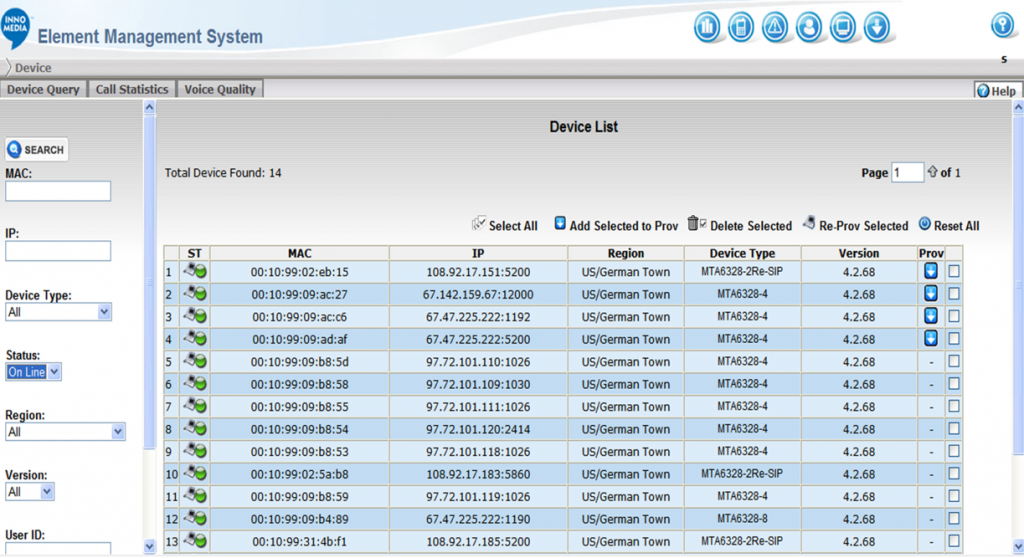
Device Search and Query with Filters
Devices can be searched using MAC, IP Address, Device Type, Status or Firmware Version, Region or User ID.

Remote Device Access and Control
Once a specific device is selected, it can be accessed remotely using Telnet or web GUI, and can be reset or reprovisioned.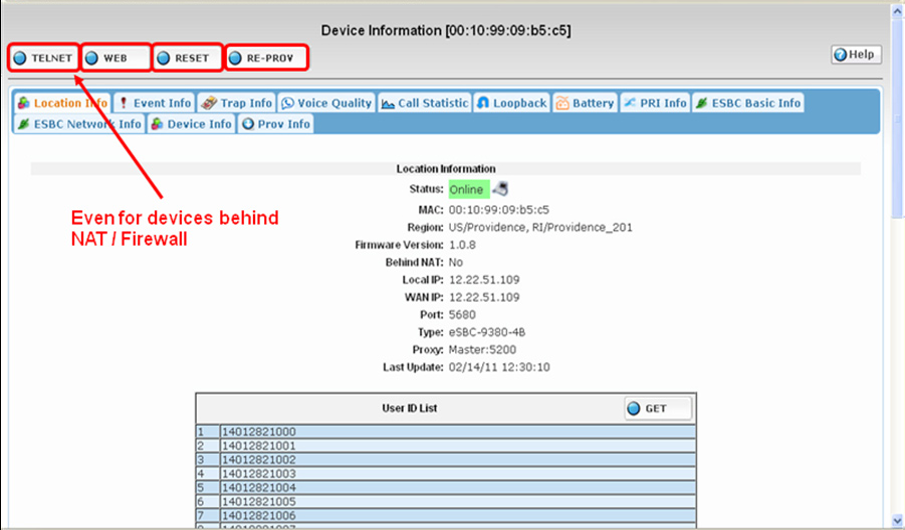
The EMS’ device information summary page provides a useful overall summary of device configuration and status without having to access the device’s own GUI.
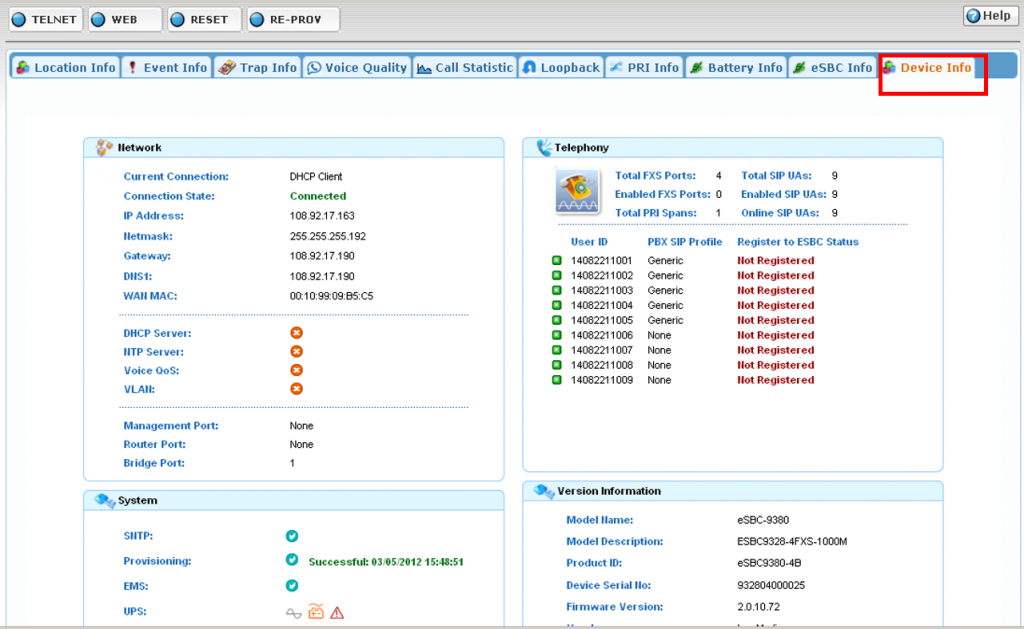
Temporal Analysis of Voice Quality
With devices supporting RTCP-XR and end-of-call syslog reporting, the EMS gives temporal analysis by plotting the variation of voice quality parameters over time. The parameters include R-factor, MOS, jitter, packet loss, and delay. The time plots can be zoomed in to pinpoint issues during a specific period. This temporal analysis provides a powerful means of identifying where network problems lie and how often they occur.
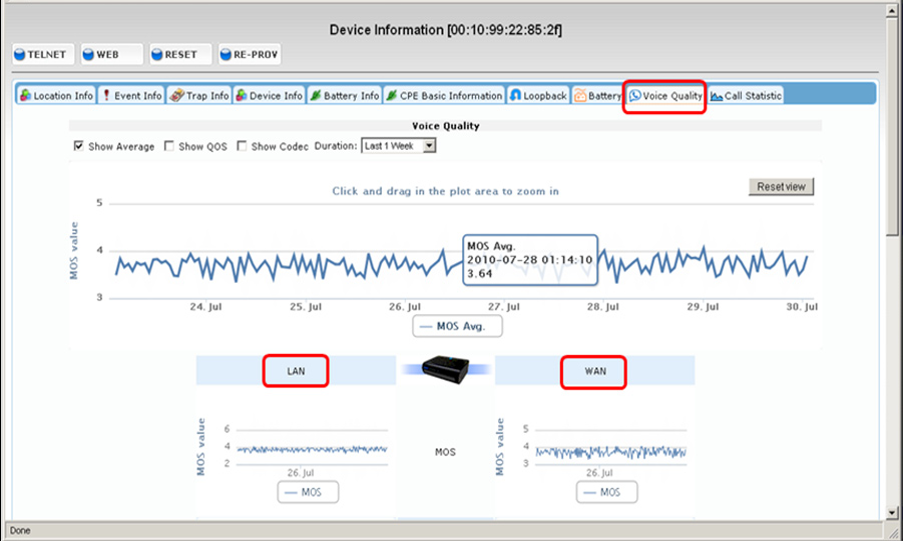
The call statistics view in the EMS gives call details for specific devices, device types, regions and caller/callee numbers. It provides a graphical view of call statistics as well as CDR-like information. By highlighting a specific call, its VoIP metrics will be shown, thus, allowing analysis on problem calls.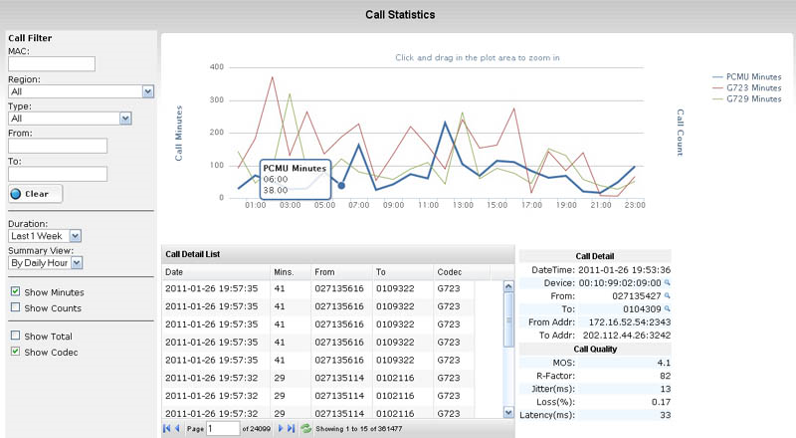
Parametric Voice Quality Analysis
The parametric voice quality analysis tool gives a network-wide or region-wide multi-dimensional anslysis by showing packet loss on the x-axis and jitter on the y-axis. Delay is graphically represented by the size of the circle, and the call quality (MOS or R-factor) is shown as the color of the circle. The parametric voice quality analysis tool gives a very quick visual view for finding problem cases and problem causes.
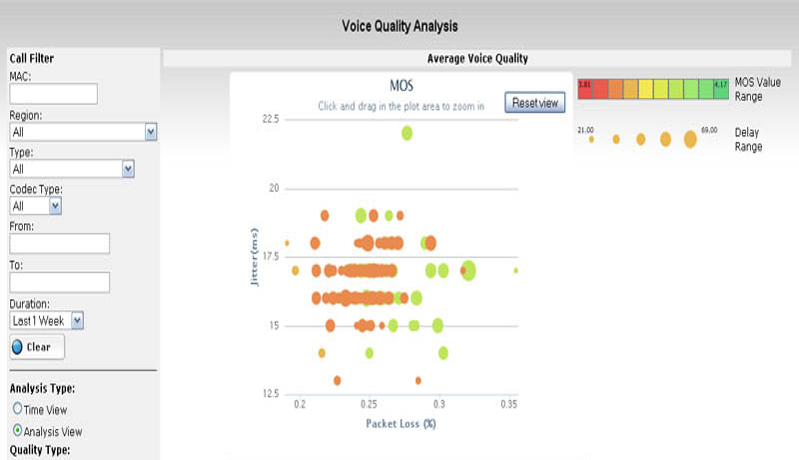
Voice Quality Monitoring (VQM)
Acting as a VQM server, the InnoMedia EMS provides measurement-based voice quality monitoring. It contacts the device to be monitored and places the device into loopback mode. The EMS (VQM server) then sends a reference speech utterance to the device. The speech is looped back at the device and returns to the VQM server. The VQM server then compares the reference and the degraded (returned) speech using PESQ analysis, and produces an estimate of MOS score, packet loss, jitter, and delay. This mechanism allows immediate active measurement of voice quality on the path to the device.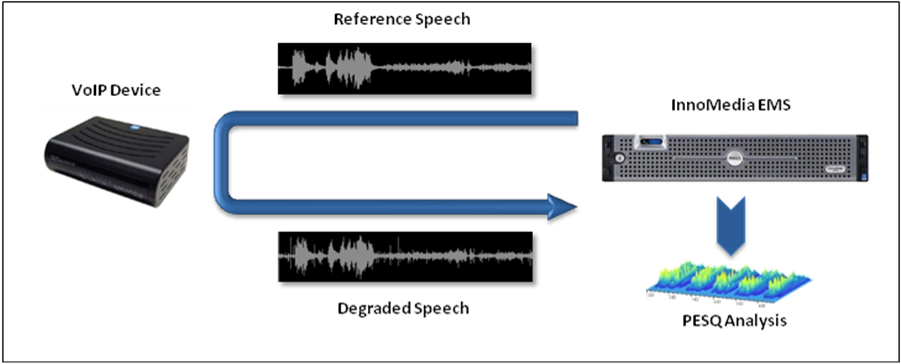
Hierarchy of Call Quality Management Tools
The variety of tools in the InnoMedia EMS provide a capability for a network-wide overview or detailed device-specific probing, thus, allowing all types of analysis from a “birds-eye view” monitoring of the entire network down to pinpointing difficult-to-find problems at the device level.
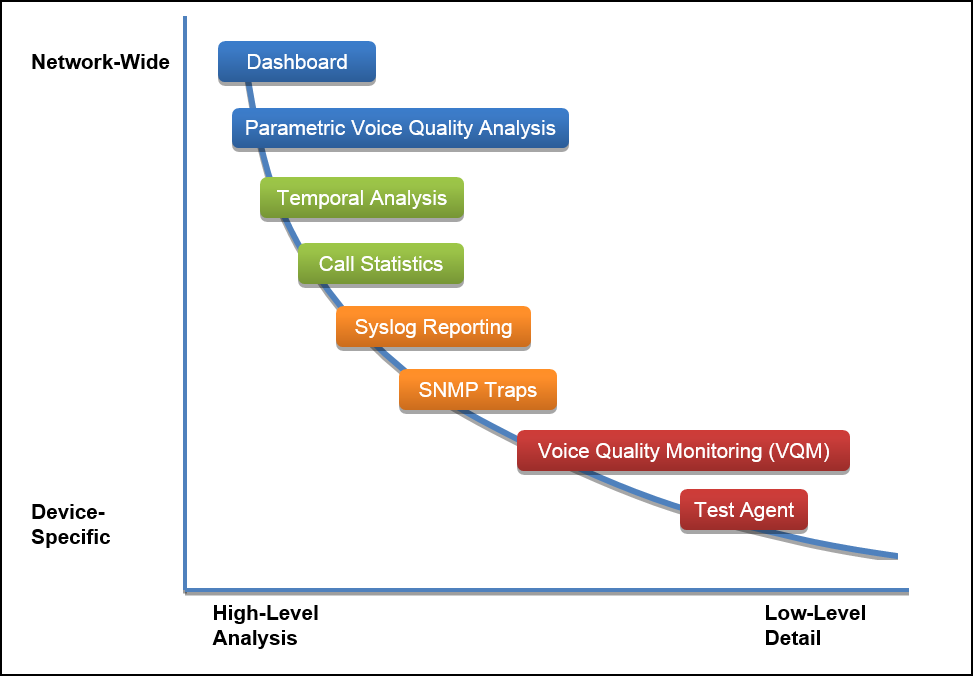
Multiple Provisioning Protocol and Device Configuration File Support
The InnoMedia EMS supports TFTP, HTTP, and HTTP with security (RFC2617-based) provisioning. It can provide configuration files of the following formats:
- ‘Tag equal Value’ format – INI, INIv, SINI
- TLV format – PKT TLV
- Comma-Separate Value – CSV, SCSV
- XML format
Below is an example snippet from XML-based Config File.
EMS Interface to Operator’s OSS
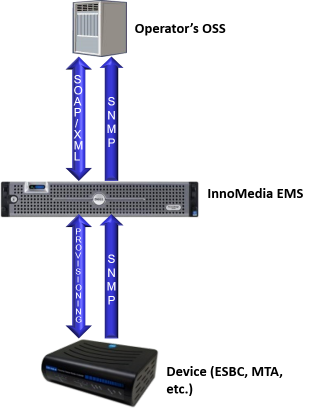
- SOAP/XML Northbound Interface:
- ESBC configuration data can be imported/exported to the EMS from the Operator’s OSS
- SNMP Northbound Interface:
- SNMP Traps from the device can be filtered and forwarded to a Trap Collector in the Operator’s OSS
- Requires device MIB to be incorporated into the Trap Collector
Hierarchical Grouping with Multiple Inheritances
- Network can be partitioned into a Hierarchy of Regions
- Can also have multiple Device Types in a network
- Device can inherit attributes from Region or Device Types
- Precedence is:
- Device-Specific Parameters
- Device-Type Parameters
- Region-Specific Parameters
- Precedence is:
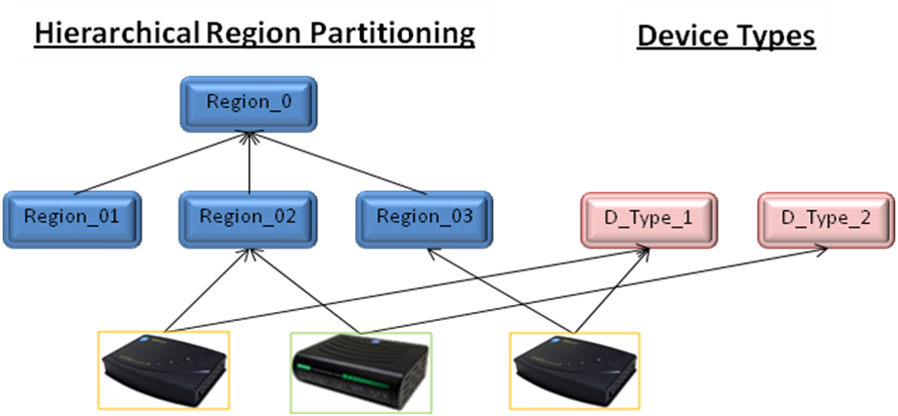
- Provisioning Profiles allow ease of Config File creation
- Define protocol, format and security method to use
- Provisioning Profile can then be assigned to specific Region, Device Type or even single Device
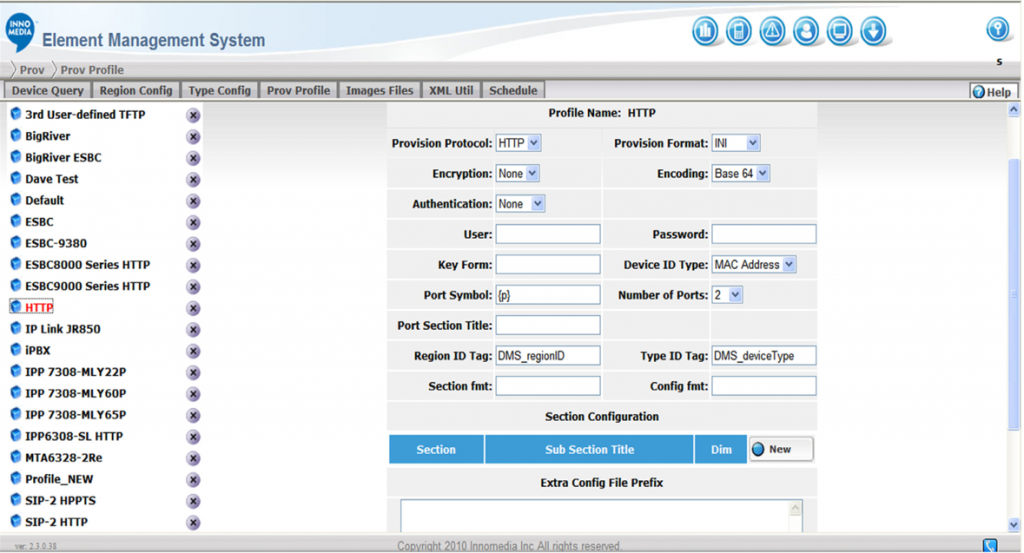
- Provisioning can be initiated by device:
- At power-up or
- When device reboots or
- When provisioning timer expires (provisioning timer generally set to 24 hours duration)
- At these times, device will automatically:
- Contact Server
- Authenticate to Server
- Download Config File
- If required, download Image File

- Provisioning can also be initiated by Server in batch mode at scheduled time
- For example, to rollout new software image to all deployed units in a region
- Scheduler also distributes provisioning requests to avoid an avalanche
- Software Versions can also be Rolled Back on a single device or multiple devices
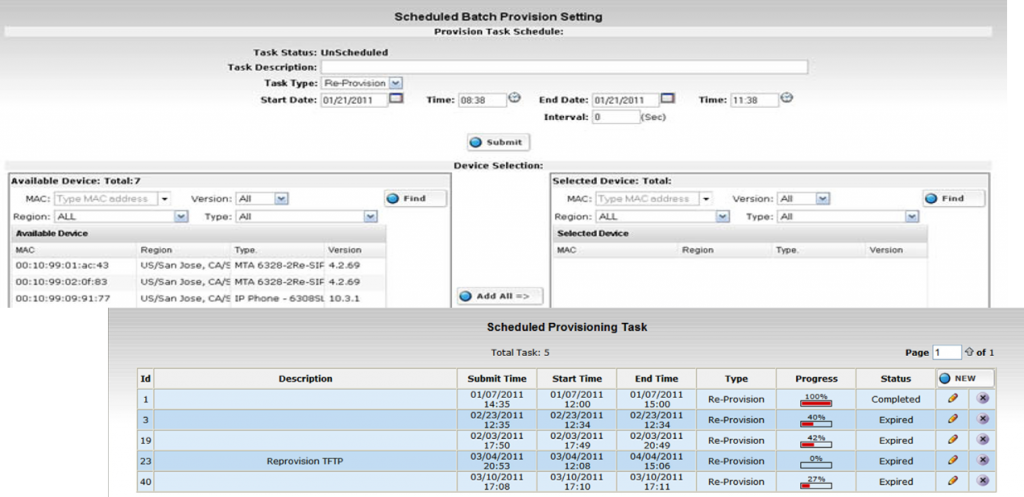
- Can select provisioning changes for Rollback by:
- All changes since a particular date/time
- All changes within a 30-minute window
- Selected by Region, Device or Profile
- Rollback action itself cannot be undone
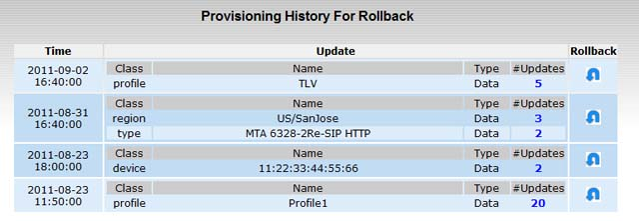

- Fault Management System can be used to filter, view & manage traps/events/alarms
- User can define Severity Levels and Colors for different types of Events
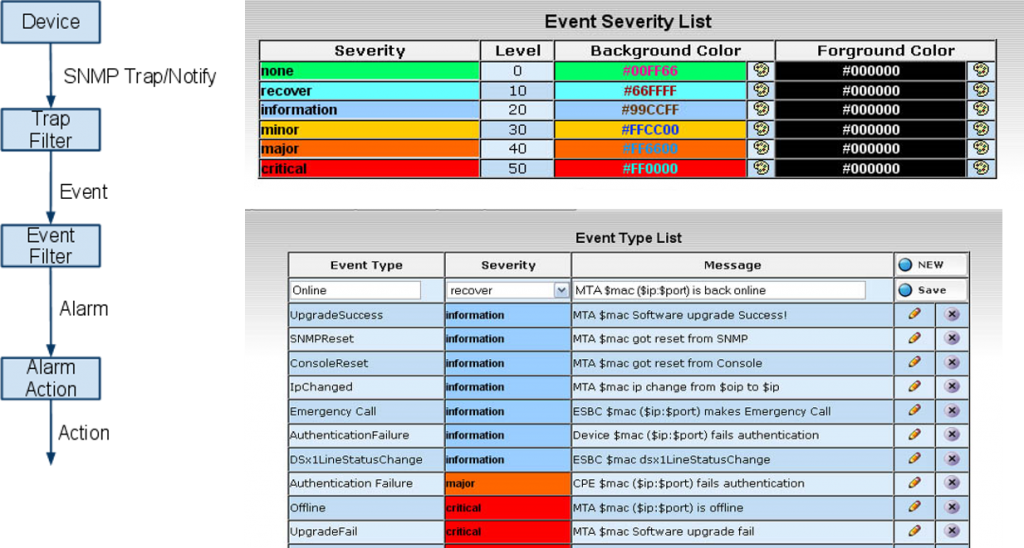
Event and Alarm Query GUI
- Events & Alarms can be filtered by Time, ID, Device MAC, Type, Severity & Region
- Events can be thresholded to produce alarms
- Alarms can act as triggers to perform specific actions, eg send e-mail to operator
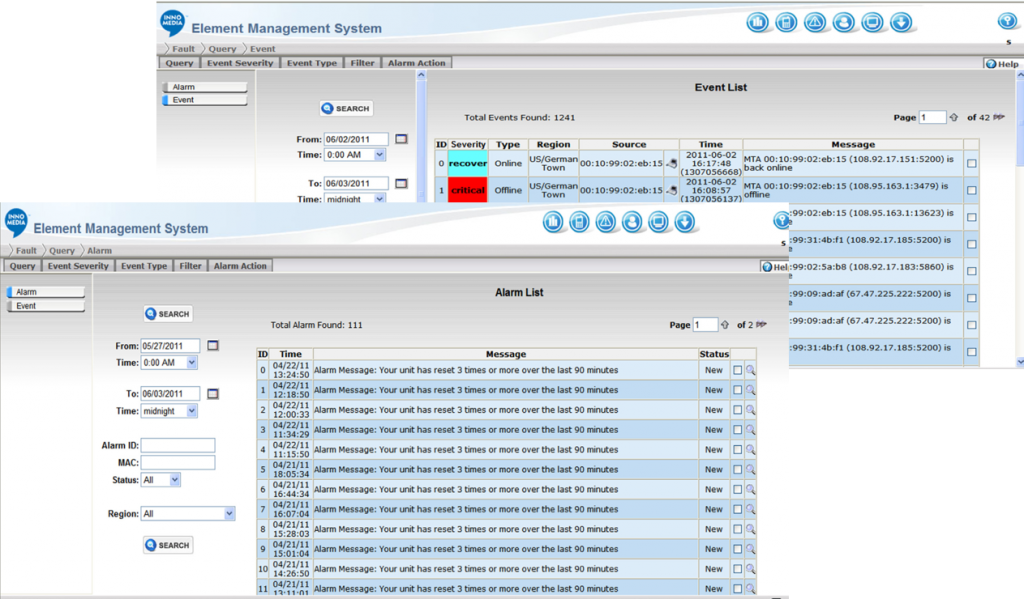
System Architecture: Hierarchical, reliable and scalable
- Master Database (DB) consists of a highly reliable active-standby server pair
- Both servers are connected with a GigE interface and shared software that provides keep-alives and monitoring of the inter-server link to ensure entire system is highly available
- Database is synchronized between disks of two servers
- Master DB used to store static data such as device configuration and system settings
- Single, Master IP address ensures seamless switch-over between servers

- Proxies are logical entities that can be run on the same servers as the Master Database
- Proxies have their own distributed Shard Databases which store dynamic data such as CDR’s and syslog messages
- Minimal configuration is 2 servers configured as 1x Master DB active-standby pair + 1x Proxy running on the same servers
- Provides capacity to provision and manage 50,000 devices
- Each additional Proxy increases capacity by 50,000 devices
→ Highly Reliable, Scalable solution tailored to all sizes of operator networks
- Database replication between two sites
- Main site is primary, but backup site is also active (so ready for instant, automatic failover)






